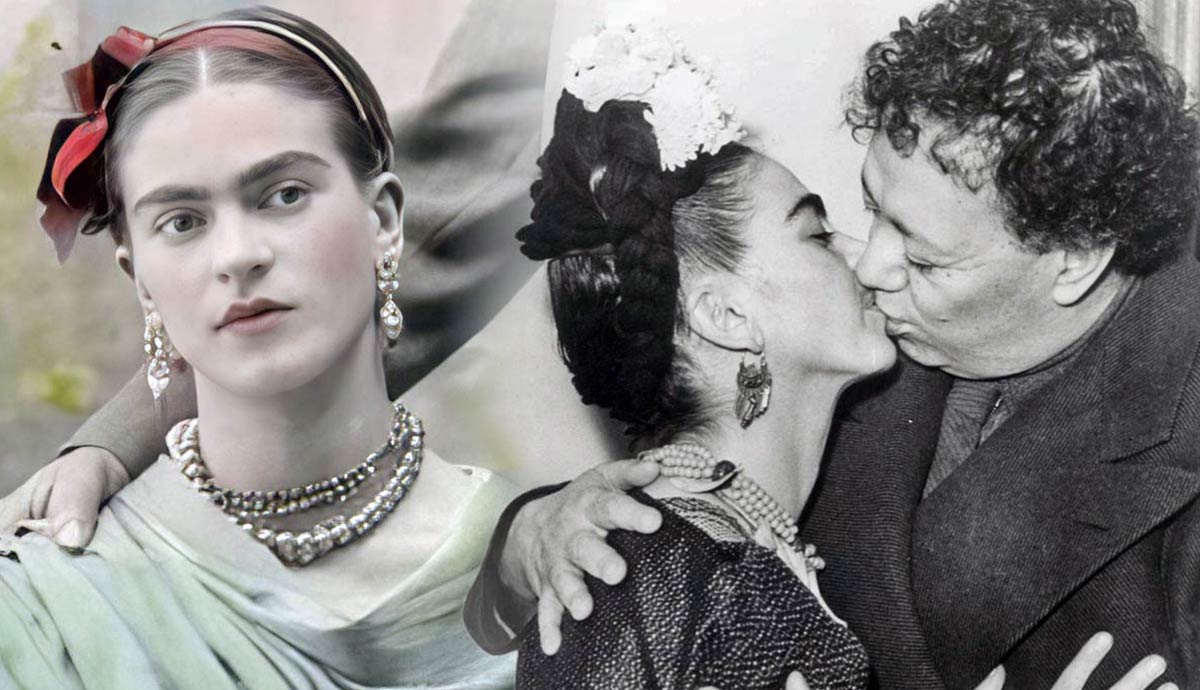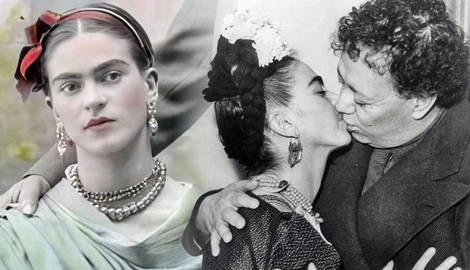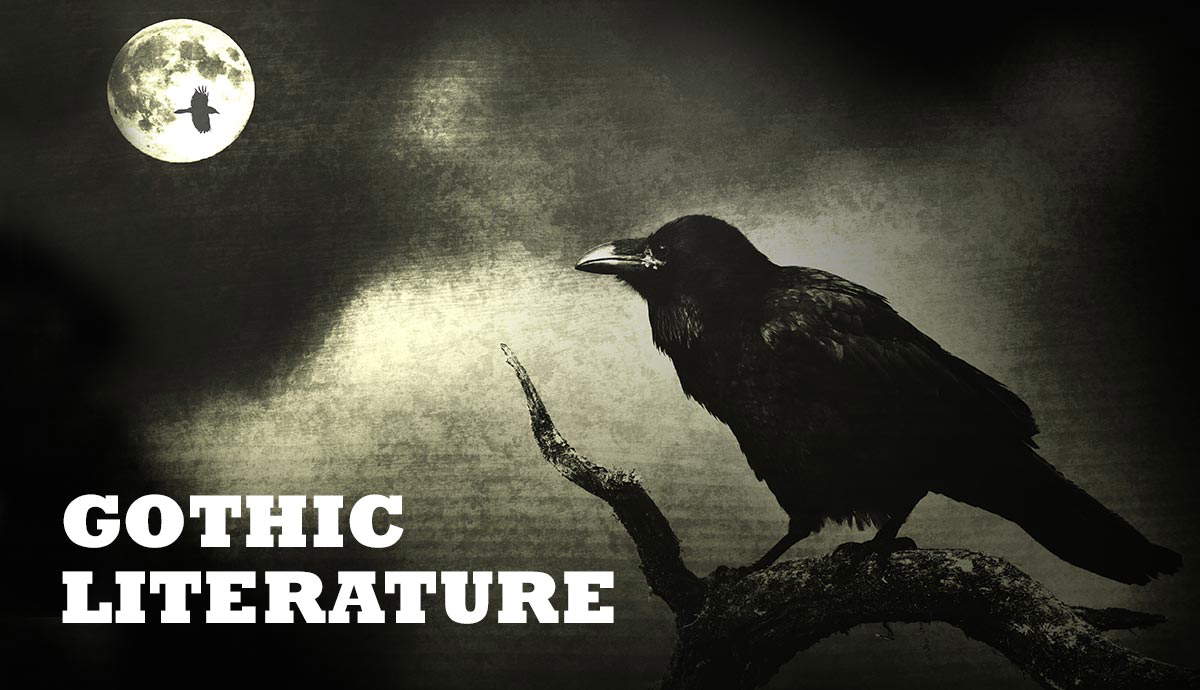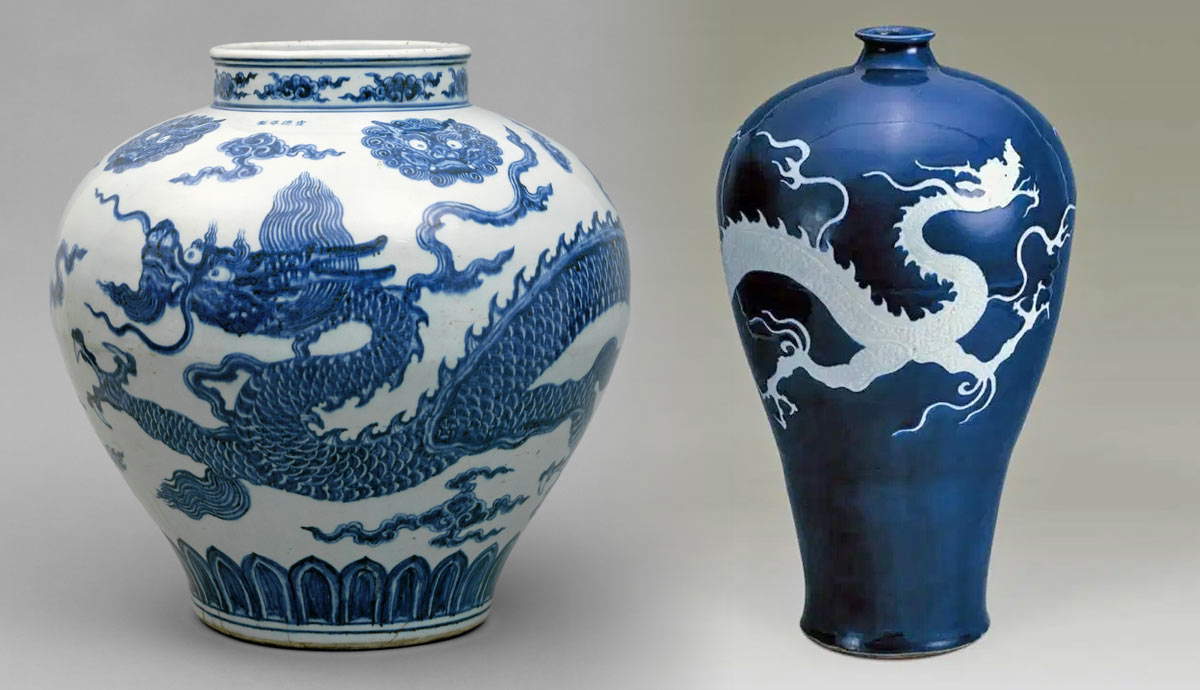
In 1929, 22-year-old Mexican painter Frida Kahlo married muralist Diego Rivera, who was two decades her senior. More than lovers, their mutual influence was most prominent in their respective artistic creations. Their admiration for each other’s talent, as well as a shared belief in Marxism and “Mexicanidad” also defined their inextricable connection. Despite profound love, their marriage was fraught with other challenges such as infidelity and Kahlo’s health problems. This article delves into the troubled and eventful love story of two of Mexico’s most prolific artists of the 20th century.
When Did Frida Kahlo Meet Diego Rivera?

Kahlo’s affinity with Rivera began back in 1922 when she was 15 years old. She was then a student at the prestigious Escuela Nacional Preparatoria (National Preparatory School), where he was commissioned to paint his mural Creation. As Rivera recalled later, when he was working on the mural, he heard a mischievous voice shouting, “On guard, Diego, Nahui is coming!” The voice, belonging to Kahlo, was referring to Nahui Olin, a Mexican painter who was posing as Erato, the Muse of poetry, for the mural.

One night, as Rivera was painting, Kahlo burst into the auditorium and asked if she could observe him paint. According to Rivera, Kahlo watched silently for hours, with “her eyes riveted on every move of [his] paint brush.” Allegedly, Kahlo’s appearance in the auditorium incurred the jealousy of Rivera’s then-wife, Guadalupe Marín. Though Marín initially confronted Kahlo, she was later impressed with how the latter did not budge despite her tender age. In 1927, Marín and Rivera divorced. When Kahlo married Rivera in 1929, she became friends with Marín, bonding over their frequent shopping trips together.
Electrifying Connection and Flying Sparks

After their initial encounter in 1922, it is often said that Rivera and Kahlo would only reconnect in 1928 at a party and get married in 1929 at the Coyoacan town hall. However, according to Rivera’s memoirs, he had apparently met Kahlo again earlier, when he was working on the murals in the Ministry of Education building. The feisty Frida, then 18, had sought him out to obtain a professional opinion for her works. She even invited him to her home at La Casa Azul to view her works and offer a critique.

Thoroughly impressed, Rivera recalled that her paintings “had a fundamental plastic honesty, and an artistic personality of their own,” which “showed none of the tricks in the name of originality that usually mark the work of ambitious beginners.” Rivera encouraged Kahlo to continue pursuing a career as an artist, and that “no matter how difficult it is for [her], [she] must continue to paint.” After the visit to La Casa Azul, sparks flew between the two as they shared their first kiss and Rivera began courting Frida in earnest.
Marxism and Mexicanidad

Nicknamed “The Elephant and The Dove,” referencing the disparity in their physical stature, Rivera and Kahlo formed an artistic powerhouse duo. Besides influencing each other’s art, they connected on many other levels. They were both known for their dedication to Mexicanidad—the essence of being Mexican, which explores Mexican identity, pride, and cultural heritage. This was at a time when the country was experiencing a cultural renaissance. It was on the cusp of rediscovering and re-embracing its pre-Columbian and Indigenous heritage, following the turbulent Mexican Revolution. At the same time, Kahlo and Rivera subscribed to Marxist ideologies and were closely affiliated with the Mexican Communist Party. They were active in the leftist political circles and voiced strong anti-capitalistic sentiments. Their works, such as Kahlo’s My Dress Hangs There (1933) and Rivera’s Man at the Crossroads (1934), reflected a disdain towards what they perceived as the negative influence of American capitalism.
A Marriage Marred by Extramarital Affairs and Maladies

Touted as an unconventional pair due to vast differences in their age and personality, Rivera and Kahlo continued to be confronted by numerous challenges in their marriage. Most prominent of all was their respective infidelities. Rivera had long established a reputation as a womanizer and persisted with his playboy lifestyle even after getting married. He went as far as to have an affair with Kahlo’s biological sister, Cristina—an act that deeply hurt Kahlo when she discovered it in 1935. While married to Rivera, Kahlo, too, had multiple lovers, including American photographer Nickolas Muray, American artist Isamu Noguchi, and former Soviet leader Leon Trotsky.

Apart from a chaotic marriage rife with infidelity and fights, Kahlo struggled with her health problems, as well as personal grief. Kahlo had endured a miscarriage in 1930 due to an incorrect fetus position. In 1932, she suffered yet another miscarriage, leading to a serious hemorrhage that required two weeks of hospitalization. A few months later, she mourned her mother’s untimely death from surgical complications.
Throughout the 1930s, she had undergone a slew of surgical procedures, including an appendectomy, two abortions, the amputation of gangrenous toes, and numerous foot operations. These collective experiences saw her pour her pain into some of the most representative paintings of her career, such as Henry Ford Hospital (1932) and What the Water Gave Me (1938).
A Whirlwind Divorce and Remarriage

By the end of 1939, it was clear that Kahlo and Rivera’s marriage had come to an end, and they were granted a divorce. Though they remained on amicable terms, Kahlo was determined to make a living for herself without having to rely on Rivera. Switching to larger canvases and adopting a more refined technique, Kahlo enjoyed a period of productive creative output. In 1940, about a year after their divorce, fate would bring the two former lovers together again, this time in San Francisco. Rivera had been working on his Pan-American Unity mural there while Kahlo was seeking treatment from Dr. Leo Eloesser, her most trusted medical adviser. With a connection stronger than infidelity and chaos, Kahlo and Rivera were married again on his 54th birthday in December 1940.
A New Chapter

After getting married for the second time, the lovebirds returned to Mexico City and lived together in La Casa Azul. Agreeing to give each other more space in the marriage, Rivera and Kahlo maintained their separate social circles and pursuits. However, though significantly less turbulent, patterns of infidelity remained in their marriage the second time around. Throughout the 1940s, Kahlo’s ill health also persisted as she battled spinal problems, pain in her leg, chronic hand infection, and syphilis.
Despite this, she maintained her creative output and produced several career masterpieces during this period, including The Broken Column (1944) and The Wounded Deer (1946). Rivera, too, continued working on his mural commissions, including Dream of a Sunday Afternoon in Alameda Park (1947), a stunning work depicting iconic characters who had defined Mexico’s complex history.
Final Years and Death

In the early 1950s, Kahlo’s health took a turn for the worse after enduring numerous surgeries. She was also increasingly depressed and had to rely on painkillers, wheelchairs, and crutches to go about her daily life. Despite this, Kahlo remained as active as she could afford in leftist political activities. In less than two weeks after her last public appearance, Kahlo was found dead in her bed in July 1954. Without an autopsy, the circumstances surrounding Kahlo’s death fueled rife claims that Rivera might have assisted in ending her life to ease her pain. Nonetheless, Kahlo was given a dignified state funeral at Mexico City’s Palace of Fine Arts, where numerous political figures, friends, and mourners turned up to say their final goodbye.

About a year later in July 1955, Rivera married his agent, Emma Hurtado. He continued to work on his paintings even in ill health. Rivera had been diagnosed with cancer and sought medical treatment in Moscow, which was said to be more advanced than Mexico at the time. In September 1957, a combination of a stroke and phlebitis made painting extremely difficult, leaving Rivera lamenting that “the brush no longer obeyed him.” Rivera would pass away in November of the same year of heart failure, just three years after Kahlo’s death. It was said that Rivera had wanted his ashes mixed with those of Kahlo and interred at a private temple. However, he was eventually laid to rest in the Rotonda de las Personas Ilustres (Rotunda of Illustrious Persons), which recognized prominent persons who had contributed to Mexico’s military, civic, and cultural fields.
The Enduring Love Story of Frida Kahlo and Diego Rivera

The works of Kahlo and Rivera, both acclaimed as Mexico’s most influential 20th-century artists, continue to garner recognition and praise even after their deaths. Rivera’s epic murals, rich in imagery and political messages, are some of the most monumental works reflecting Mexican identity. Kahlo’s brutally honest paintings and iconic self-portraits have become synonymous with strength and belief, making her a celebrated feminist icon and a symbol of resilience. The couple’s marriage(s), characterized by electrifying connection and intense admiration for one another amidst marital troubles and infidelity, remain talked about even to this day. A love story that converges art, passion, identity, and politics, their iconic union sparks enduring conversations and continues to inspire generations of artists in Mexico and around the world.










